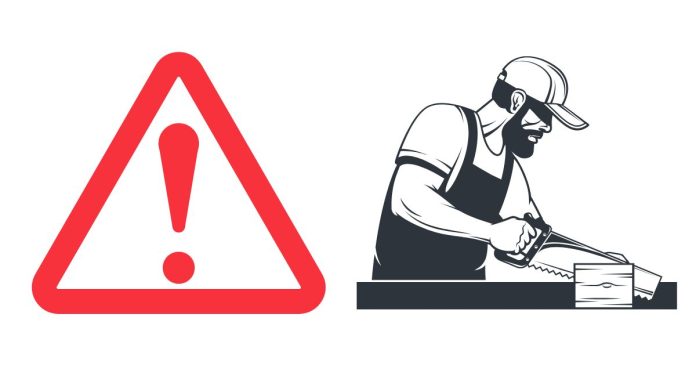Precautionary Measures When Sanding, Sawing, Cutting, or Grinding Masonry Materials
Working with masonry materials like concrete, brick, and stone often requires sanding, sawing, cutting, or grinding. While these processes are necessary for various construction and DIY projects, they can also pose serious health and safety risks if proper precautions are not taken. Dust, noise, and debris from these activities can be harmful to your health and safety. Here are some essential precautionary measures to ensure a safe working environment when working with masonry materials.
1. Wear the Right Protective Gear
One of the most important steps to take when working with masonry materials is to wear proper protective equipment:
- Respirator or Dust Mask: Sanding, cutting, or grinding masonry materials can release harmful dust, such as silica, into the air. Wearing a respirator or dust mask can help protect your lungs from inhaling these dangerous particles.
- Safety Goggles: Flying debris and dust can irritate your eyes. Protect your eyes by wearing goggles that offer a secure fit and full coverage.
- Hearing Protection: The noise from saws, grinders, and other equipment can be loud and damaging. Use earplugs or earmuffs to reduce exposure to loud sounds and prevent hearing loss.
- Gloves and Protective Clothing: Wear sturdy gloves to protect your hands from sharp edges, and protective clothing to shield your skin from flying debris.
2. Ensure Proper Ventilation
Working with masonry materials can release harmful dust particles into the air, which can be inhaled and cause long-term health issues. To minimize this risk, ensure that you work in a well-ventilated area. If possible, work outdoors or in a space that is equipped with an exhaust fan or dust extraction system to keep the air clean. If working indoors, consider using a HEPA filter to further reduce airborne particles.
3. Use Wet Cutting Methods When Possible
Cutting or grinding masonry materials can create significant amounts of dust. To reduce dust exposure, consider using wet cutting methods, which involve spraying water on the surface while cutting. This helps to keep the dust down and reduces the amount of airborne particles. Many power tools designed for masonry work come with a built-in water system, or you can use a water hose to dampen the material as you cut.
4. Keep the Work Area Clean
A cluttered or dusty work area can increase the risk of accidents and health problems. Regularly clean the workspace to remove dust, debris, and other hazardous materials. Use a shop vacuum or wet-dry vac to clean up dust after cutting or grinding. Avoid sweeping, as it can stir up the dust, making the situation worse.
5. Inspect Your Tools Before Use
Before you begin any sanding, sawing, cutting, or grinding, inspect your tools to ensure they are in good working condition. Check for any signs of wear or damage that could affect performance or safety. Ensure that all safety guards are in place and functioning properly, and verify that blades and discs are sharp and secure.
6. Take Regular Breaks
Extended exposure to noise, dust, and intense focus can lead to fatigue. Be sure to take regular breaks to reduce the physical strain and allow your body to recover. Step away from the work area to get some fresh air and rest your eyes and ears.
7. Follow Manufacturer Guidelines
Always follow the manufacturer’s instructions for your tools and equipment. These guidelines provide essential information on proper usage, maintenance, and safety features. Adhering to these recommendations helps ensure you are using the equipment as safely and effectively as possible.
Sanding, sawing, cutting, and grinding masonry materials are essential tasks in construction and DIY projects, but they come with inherent risks. By following these precautionary measures—wearing the right protective gear, ensuring ventilation, using wet cutting methods, keeping the work area clean, inspecting tools, and taking breaks—you can protect your health and safety while getting the job done effectively. Always prioritize safety to create a safe working environment and avoid long-term health issues.


